Pallet Inverter Safety Tips for Vietnam Plants Facing Warehouse Space Constraints and Fast-Growing Exports
As an engineer who has spent his entire career on the factory floor, I’ve seen firsthand how the right equipment can transform a business. I’ve also seen how the wrong approach to that equipment can create serious problems. In Vietnam, I see so many businesses growing at an incredible speed, especially in exports. But this growth comes with challenges. Your warehouse space is getting tight, the pressure to ship orders is immense, and every minute of downtime costs you money and reputation. In this high-pressure environment, it's easy to overlook the safety of essential machines like pallet inverters.
An accident isn't just a statistic; it's a chain reaction. It can lead to severe injuries for your skilled workers, damage to the very products you’re trying to export, and a complete shutdown of your logistics line. For a fast-growing Vietnamese company, this isn't just a setback; it's a threat to your hard-earned success. But it doesn't have to be this way. By focusing on a few critical areas of pallet inverter safety, you can protect your people, your products, and your production schedule, turning a potential risk into a powerful asset for growth.
To ensure pallet inverter safety, especially in the fast-paced export environment of Vietnam, plants must focus on four key areas: implementing comprehensive operator training, selecting machines with essential built-in safety features like guarding and light curtains, optimizing warehouse layout to create clear operational zones, and adhering to a strict, documented maintenance schedule. These steps directly address the risks associated with constrained spaces and high-throughput demands.
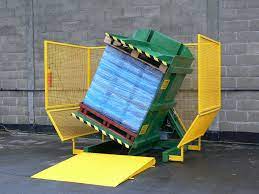
These points provide a strong foundation for safety. But as an engineer, I know that the details are what truly matter. True operational safety and efficiency come from understanding the "why" behind each rule and the "how" of implementing it effectively on your busy factory floor. Let's dive deeper into each of these areas to build a truly robust safety culture around your material handling equipment.
How can proper pallet inverter training reduce accidents in a busy Vietnamese warehouse?
In a busy warehouse, especially one supporting Vietnam's booming export market, new staff often come and go. It’s tempting to put a new worker on a machine with just a quick five-minute demonstration. This is a huge risk. You assume they understand the machine’s limits and dangers, but they probably don’t.
This lack of deep knowledge is where accidents are born. An untrained operator might not understand the machine's center of gravity, its load capacity, or what the strange noise it's making means. They might not know the correct procedure for clearing a jam or what to do if the load shifts unexpectedly. This hesitation or wrong action can lead to a load tipping, equipment damage, or worse, a serious injury. A structured training program is the only professional way to solve this. It replaces assumptions with certainty and fear with confidence.
A comprehensive training program is the single most effective way to reduce pallet inverter accidents. It ensures every operator, new or experienced, understands the machine’s specific load capacity, its built-in safety features, the correct emergency stop procedures, and the critical importance of maintaining a clear working area. This knowledge builds operator confidence and drastically minimizes the potential for human error.
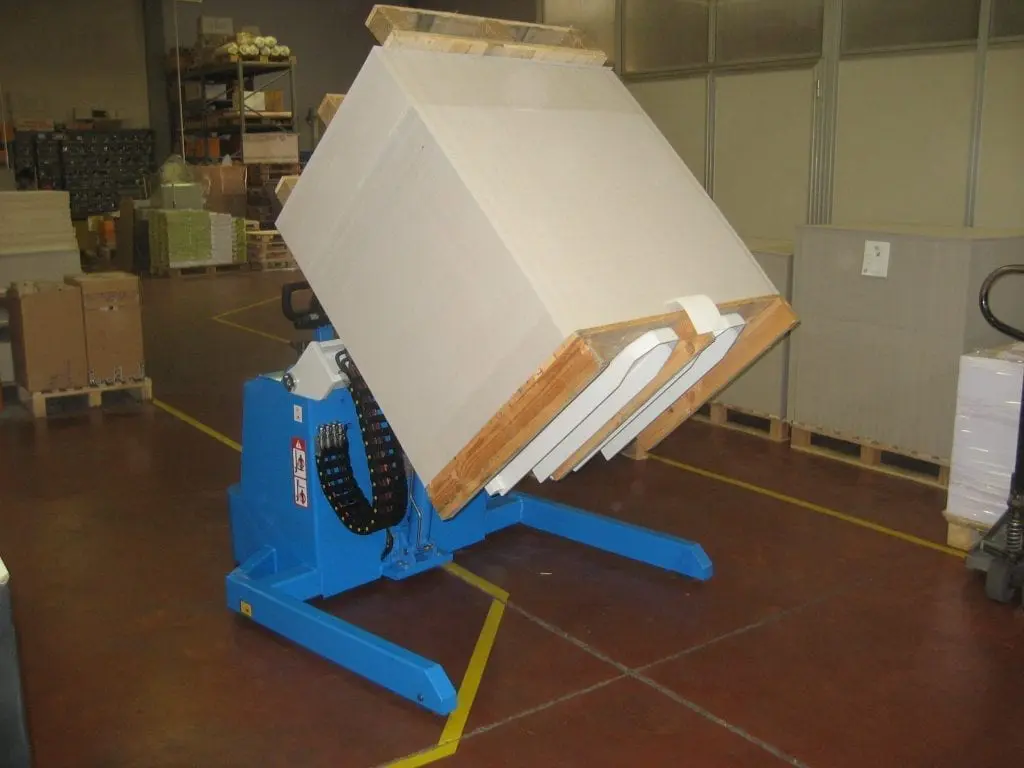
A simple demonstration is not training. True training is a process, not a one-time event. It creates a culture of safety that pays for itself many times over. When I set up my own factory, I made sure that no one touched a machine without being certified internally, and this principle is crucial for any high-growth operation.
The Core Components of an Effective Training Program
An effective program isn't just about reading a manual. It needs to be practical, hands-on, and verifiable. In the context of a busy Vietnamese plant, it should be simple, visual, and repeatable. Your program must cover the fundamentals from both a theoretical and practical standpoint.
| Training Module | Key Learning Outcome & Practical Application |
|---|---|
| Machine Fundamentals | Operator can identify all major components, explain their function, and state the machine's maximum load capacity and dimensions. |
| Pre-Operation Checks | Operator can perform a daily safety checklist, looking for hydraulic leaks, loose bolts, and ensuring safety guards are in place and functional. |
| Safe Operating Procedures | Operator can demonstrate proper loading/unloading, understands how to manage different load types (e.g., boxes, bags, drums), and knows the machine's "safe zone." |
| Emergency Procedures | Operator can locate and activate the E-Stop, and can explain the procedure for a power failure, a jammed load, or a hydraulic system fault. |
| Lockout/Tagout (LOTO) | Operator understands and can demonstrate how to safely de-energize and lock the machine before any cleaning or maintenance. |
Beyond the Basics: Continuous and Refresher Training
The fast pace of export manufacturing in Vietnam often means high staff turnover. Training cannot be a "one and done" activity. A robust system includes scheduled refresher courses, especially when you introduce a new type of product or pallet.
Consider language barriers. Your training materials should include clear diagrams, pictures, and perhaps videos. Practical demonstrations are far more effective than text-heavy manuals. I’ve seen great success with a "buddy system," where a newly trained operator works alongside an experienced mentor for their first week.
Finally, document everything. Keep a log of who was trained, on what date, and by whom. This isn't just for bureaucracy. It's for accountability. In the unfortunate event of an incident, this documentation is invaluable for your internal investigation and for demonstrating due diligence to safety authorities. It shows that you are a professional organization committed to protecting your people.
What specific safety features are essential for pallet inverters in export-focused operations?
When you’re under pressure to meet an export deadline, the temptation is to buy the cheapest machine that gets the job done. I've seen factory owners make this mistake. They look at two pallet inverters, and one is 20% cheaper because it lacks full safety guarding or light curtains. They see it as a saving.
But this is a dangerous and costly way of thinking. Imagine a worker reaching into the machine's path for just a second while it's moving. Or a forklift accidentally bumping the machine during its rotation cycle. Without proper safety features, these small mistakes can lead to catastrophic failures. The "saved" 20% vanishes in an instant, replaced by medical bills, damaged goods meant for a top client, and weeks of downtime. For an export-focused business where your reputation is on the line with every shipment, you cannot afford this risk. You must view safety features not as a cost, but as an essential insurance policy for your entire operation.
For high-throughput export operations, essential pallet inverter safety features are non-negotiable. These must include full-perimeter safety fencing to prevent unauthorized access, light curtains at the entry/exit points to immediately stop the machine if an object or person crosses the beam, dual-hand controls that force the operator to be in a safe position during operation, and a clearly visible, easily accessible emergency stop system. These features work together to protect your operator, your product, and your production schedule.
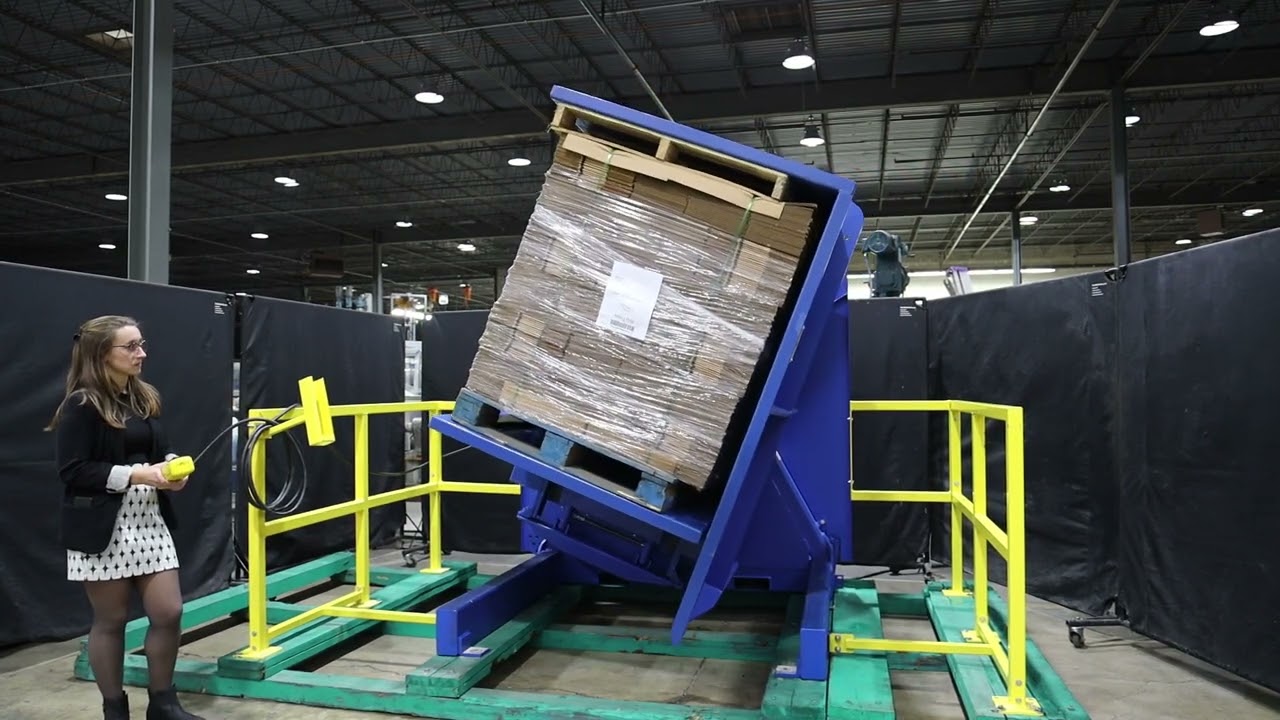
Investing in a machine with integrated safety features from the start is one of the smartest financial decisions you can make. It’s a core part of the "Total Solution" philosophy we believe in at SHJLPACK. The machine must solve your problem safely and reliably, every single time.
Active vs. Passive Safety Systems
It's helpful to think about safety features in two categories: passive and active. Your machine needs a combination of both to be truly secure, especially in the dynamic environment of a Vietnamese export facility.
- Passive Safety: These are features that are always in place. The best example is physical safety fencing. This is a permanent barrier that defines the machine's operating footprint. It physically prevents people and vehicles from accidentally entering the danger zone. It’s simple, effective, and the first line of defense.
- Active Safety: These systems actively monitor the environment and react to unsafe conditions. The most common is a light curtain. This is an invisible barrier of infrared light. If any object, like a person's hand or a stray forklift tine, breaks this beam while the machine is in motion, it instantly sends a stop signal to the machine's control system.
Why These Features Are Critical for Vietnam's Export Demands
In a fast-growing export business, your pallet inverter is a critical link in the chain. The features you choose should directly support the goals of speed and reliability without compromising safety.
| Safety Feature | Function | Why It's Critical for Fast-Growing Exports |
|---|---|---|
| Safety Fencing | Creates a physical, locked perimeter around the machine's full range of motion. | Prevents accidental collisions from forklifts or wandering personnel in a crowded, busy warehouse. Protects the machine and the product. |
| Light Curtains | Creates an invisible electronic safety barrier at machine access points. | Allows for faster loading/unloading than a physical gate but provides instant-stop protection, maintaining throughput without sacrificing safety. |
| Dual-Hand Controls | Requires the operator to use both hands to start a machine cycle, keeping them clear of moving parts. | Ensures the operator is in a fixed, safe position and fully attentive during the critical rotation or clamping phase. |
| Hydraulic Velocity Fuse | A valve that automatically stops the flow of hydraulic fluid in case of a sudden hose burst or pressure loss. | Prevents a heavy load from crashing down in the event of a hydraulic failure, saving the product and preventing a catastrophic machine failure. |
Many international clients, particularly in Europe and North America, will demand that their suppliers meet certain safety standards (like CE marking). A machine equipped with these features demonstrates your commitment to global standards, which can be a powerful selling point. It shows you are a world-class supplier.
How does a pallet inverter improve warehouse space utilization in a constrained environment?
I talk to many factory owners in Vietnam, and they all tell me the same thing: their business is growing faster than their building. Every square meter of warehouse space is precious. You have raw materials coming in, finished goods going out, and limited space for it all. This clutter and lack of space isn't just inefficient; it's dangerous.
When your warehouse is full, your team starts taking shortcuts. They stack pallets in walkways. They have to manually break down and restack pallets in cramped areas, which is slow and a common source of back injuries. You feel stuck, unable to increase your inventory or streamline your process because you simply don't have the floor space. A pallet inverter is a strategic tool that directly attacks this problem. It’s not just a machine for turning things over; it’s a machine for creating space where you thought there was none.
A pallet inverter dramatically improves warehouse space utilization by eliminating the need for large, open-floor areas for manual repalletizing. It allows you to quickly transfer goods from damaged or bulky rental pallets onto space-saving, in-house, or one-way export pallets. This act consolidates inventory, enables denser and higher stacking, and reclaims valuable floor space for storage or other operations.
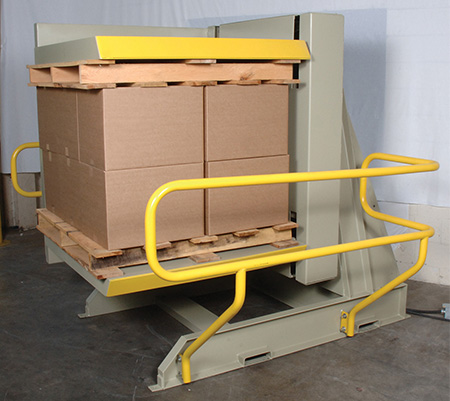
I remember in my own factory, we had a corner of the warehouse that was always a mess of broken pallets and goods waiting to be sorted. It was dead space. By installing a pallet inverter there, we transformed that "problem corner" into an efficient processing station. We reclaimed hundreds of square feet almost overnight.
The Hidden Costs of Poor Space Management
When you lack space, you incur costs that aren't always obvious on a spreadsheet.
- Wasted Labor: Your team spends hours manually moving boxes from one pallet to another. This is slow, tiring, and adds zero value to your product.
- Increased Damage: Manual handling increases the risk of dropping boxes and damaging valuable export goods.
- Inefficient Storage: You can't optimize your racking system because of non-standard or damaged pallets, leading to lots of empty air on your shelves.
- Safety Hazards: Cluttered aisles are a primary cause of trips, falls, and forklift accidents.
A pallet inverter addresses all these points by creating a centralized, fast, and safe process.
Practical Ways a Pallet Inverter Reclaims Space
Think of a pallet inverter as a tool for pallet management. This is how it directly translates into more usable space in your facility.
| Space-Saving Action | How a Pallet Inverter Enables It | Direct Benefit for a Vietnamese Plant |
|---|---|---|
| Eliminate Manual Restacking Areas | A 180-degree inverter can swap a pallet in under a minute within its own small footprint. | Frees up a large floor area previously needed for 2-3 workers to manually unload and reload a pallet. This space can now be used for more storage racks. |
| Switch to Export Pallets at Outbound | Quickly transfer finished goods from durable, expensive in-house pallets to cheaper, lighter one-way export pallets right before loading the container. | You don't need to store goods on export pallets, which are often less durable for high racking. This improves storage density and saves money on pallets. |
| Recover Product from Damaged Pallets | Safely invert a full load, remove the broken pallet from the top, replace it, and invert back. | Instantly puts a damaged load back into the system. Prevents a "quarantine" area of damaged goods from taking up valuable space. |
| Consolidate Partial Loads | Easily combine two half-full pallets into one full pallet. | Reduces the total number of pallets in your inventory, freeing up floor and rack space and simplifying inventory management. |
For a Vietnamese factory facing high real estate costs and the pressure of fast-growing exports, optimizing your existing footprint is not just a good idea—it is essential for survival and growth. A pallet inverter is a key investment in that optimization.
Why is a regular maintenance schedule critical for ensuring long-term pallet inverter safety and reliability?
As an engineer, I love watching a well-maintained machine work. It’s a smooth, predictable process. But I’ve also seen the other side. A pallet inverter that seems to be working "just fine" can be a hidden danger. You don't see the hydraulic hose that is slowly weakening, the electrical contact that is starting to corrode, or the tiny stress fracture forming in a weld.
Ignoring regular maintenance because the machine is still running is like never changing the oil in your car. It will work, until one day it doesn’t. And for a machine like a pallet inverter, that failure can be sudden and dangerous. A hydraulic hose bursts, and a one-ton load drops. A sensor fails, and the clamping mechanism doesn't engage properly. This failure doesn't just stop your shipping line; it puts your workers at extreme risk and can destroy thousands of dollars of product in a second. A proactive maintenance schedule is the only way to prevent this. It turns "I hope it doesn't break" into "I know it is safe."
A regular maintenance schedule is critical because it is a proactive process that identifies and resolves potential failures before they happen. By regularly inspecting hydraulic systems, electrical components, safety sensors, and structural parts, you ensure the pallet inverter operates within its designed safety limits. This preventative approach not only guarantees long-term safety but also extends the machine's lifespan and maximizes its uptime, which is essential for meeting the demands of fast-growing exports.
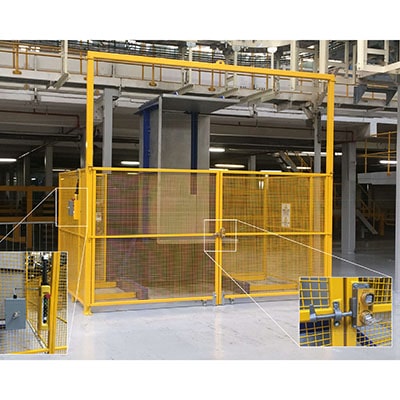
Reliability is the foundation of a successful export business. Your customers trust you to deliver on time. A well-maintained machine is a promise to your customers that you can meet that commitment. It’s a core component of building a professional, dependable operation.
Predictive vs. Preventive Maintenance
For a critical piece of equipment like a pallet inverter, you should employ a mix of both strategies.
- Preventive Maintenance: This is a schedule-based approach. You check, lubricate, and replace certain parts at regular intervals, regardless of whether they show signs of wear. For example, changing the hydraulic fluid every 2000 hours of operation. This is your baseline for reliability.
- Predictive Maintenance: This is a condition-based approach. It involves looking for signs of future failure. Listening for unusual noises from the motor, checking for increasing vibration, or noticing that the hydraulic pressure is taking slightly longer to build. This requires a well-trained operator who knows their machine and can spot small changes.
The ROI of a Maintenance Program
A maintenance program is not a cost center; it is an investment with a clear return. Let's look at it from a business owner's perspective.
| Maintenance Task | Frequency | What to Check |
|---|---|---|
| Operator Daily Check | Daily (start of shift) | Check for visible leaks, ensure guards are in place, test E-Stop button, clear debris from the area. |
| Technician Weekly Check | Weekly | Check hydraulic fluid level and clarity, inspect hoses for wear/cracks, test light curtains, lubricate chains and moving parts. |
| Engineer Monthly Check | Monthly | Verify clamping pressure against specifications, inspect electrical cabinet for loose connections, check structural welds for any signs of stress. |
Think about the cost. A few hours of a technician's time per month is a small price to pay. Now, compare that to the cost of downtime. If your pallet inverter is the final checkpoint before loading a container, and it breaks down, what is the cost?
- Wages for a team of 5-10 workers standing around.
- The fee for a shipping container and truck that you can't load.
- Potential penalties from your customer for a late shipment.
- The high cost of an emergency, after-hours repair call.
Suddenly, the cost of that monthly maintenance check looks very, very small. For a Vietnamese plant focused on exports, where every deadline is critical, reliability isn't a luxury. It's everything.
My Final Take as an Engineer
I started my career as an engineer on the factory floor, long before I started my own company, SHJLPACK. That experience taught me one thing: a machine is never just a machine. It is the heart of a process. It is the tool that allows your people to do their work safely and efficiently. It is the key that unlocks your ability to grow.
When I look at the challenges in Vietnam – the tight warehouse space, the incredible pressure of fast-growing exports – I see a problem I understand deeply. And I see how a machine like a pallet inverter, when viewed correctly, is the perfect solution. But you cannot view it as just a piece of hardware. You must see it as a system.
This system includes the machine itself, with all the right safety features. It includes your people, who must be properly trained to respect and master the equipment. And it includes your processes, like a robust maintenance schedule, that ensure reliability day after day.
My journey from engineer to factory owner was built on this principle: invest in total solutions, not just in hardware. When you invest in pallet inverter safety, you are not just buying a guard fence or a training course. You are investing in operational stability. You are investing in your ability to promise a delivery date and keep it. You are investing in the well-being of your employees and the quality of your product. This is how you build a strong, resilient business that can handle the pressures of growth and succeed on the world stage.
Conclusion
Investing in pallet inverter safety is a direct investment in your plant's efficiency, the reliability of your export schedule, and your company's future growth.


